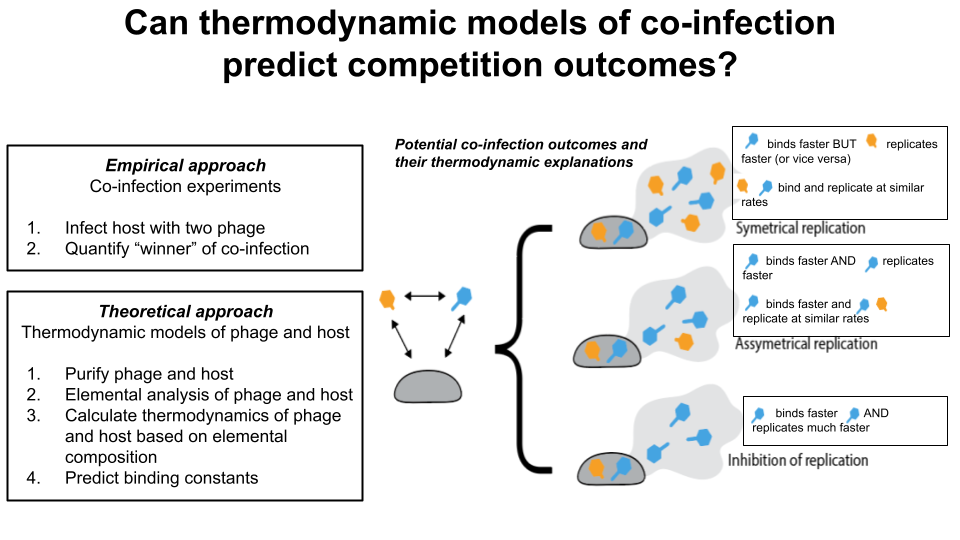Morgan Lindback received $10,000 from ITiMS to conduct this project.
Co-mentors: Melissa Duhaime and Luis Zaman
Graphical abstract content
Empirical Approach: co-infection experiments
- Infect host with two phage.
- Quantify "winner" of co-infection.
Theoretical Approach: thermodynamic models of phage and host
- Purify phage and host.
- Elemental analysis of phage and host.
- Calculate thermodynamics of phage and host based on elemental composition.
- Predict binding constants.
Potential co-infection outcomes and their thermodynamic explanations
Symmetrical replication
- Blue phage binds faster BUT orange phage replicates faster (or vice versa).
- Orange and blue phage bind and replicate at similar rates.
Asymmetrical replication
- Blue phage binds faster AND blue phage replicates faster.
- Blue phage binds faster and blue and orange phage replicates at similar rates.
Inhibition of replication
- Blue phage binds faster and blue phage replicates much faster.

